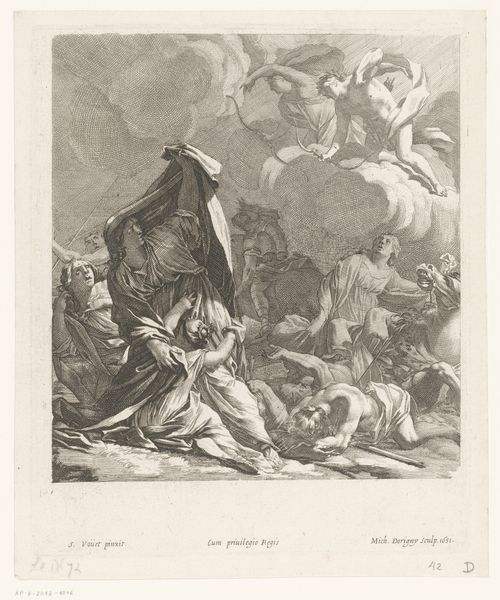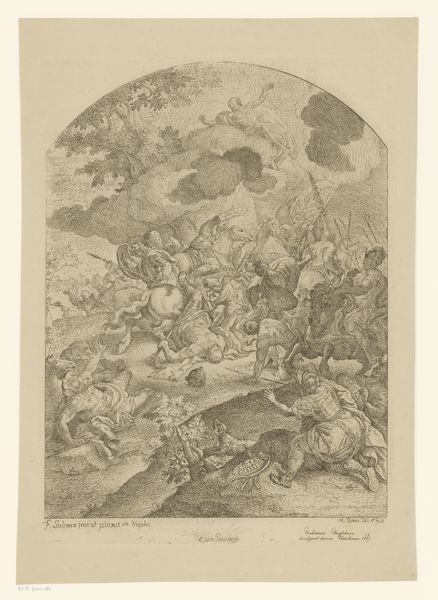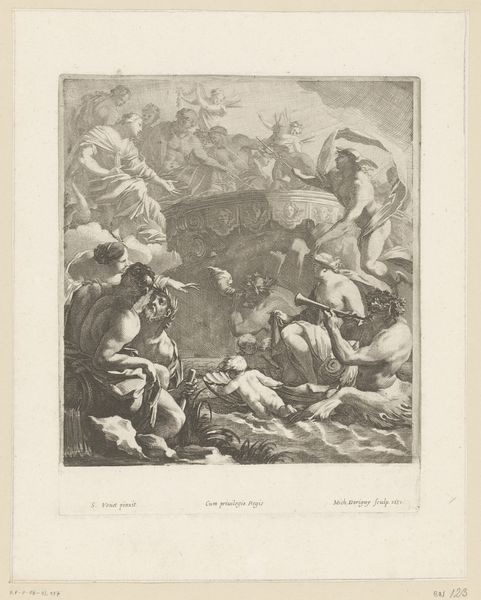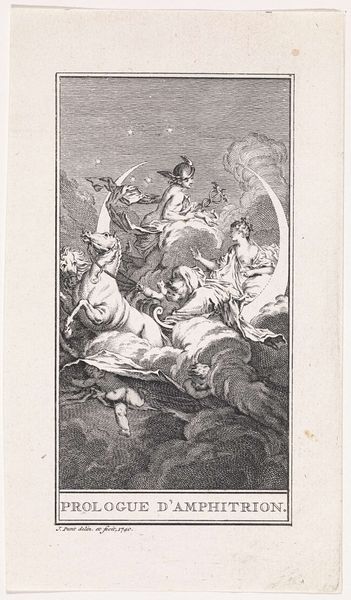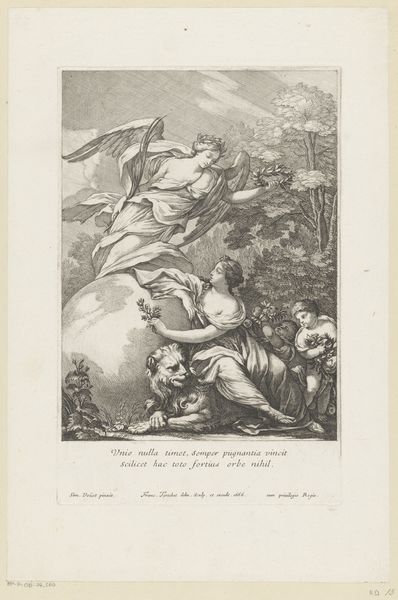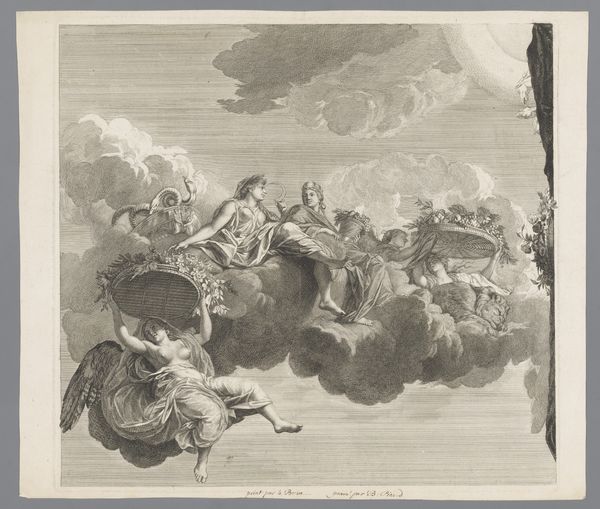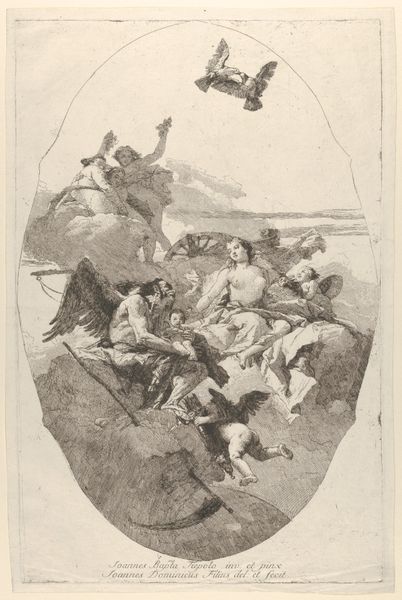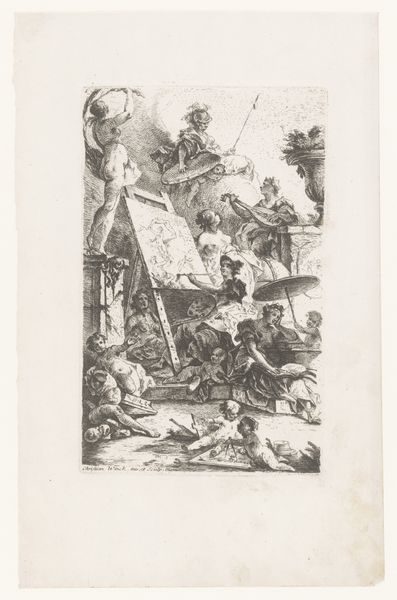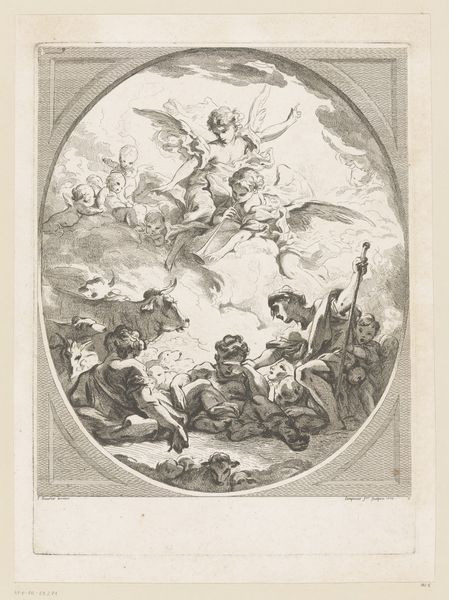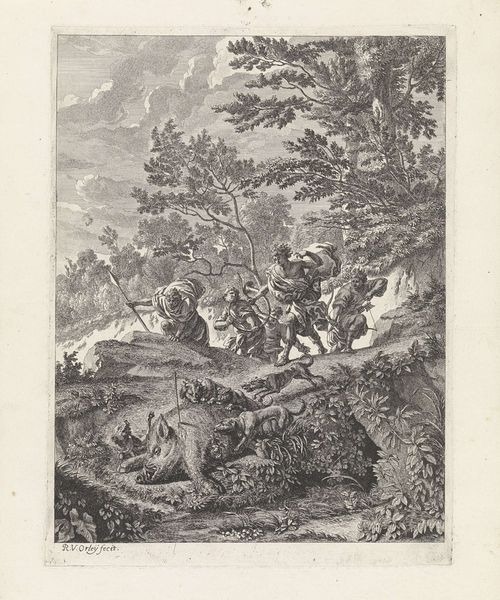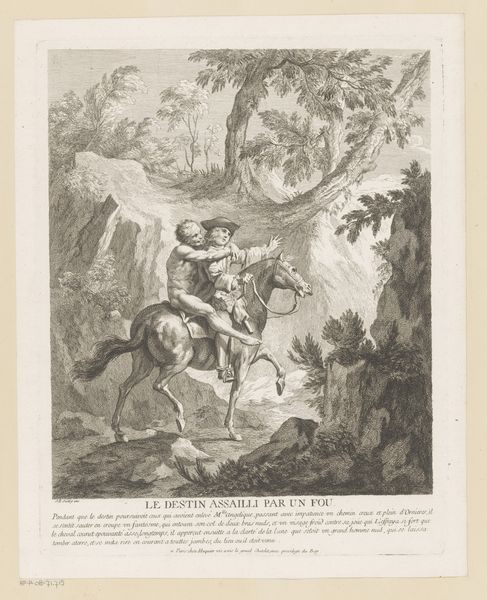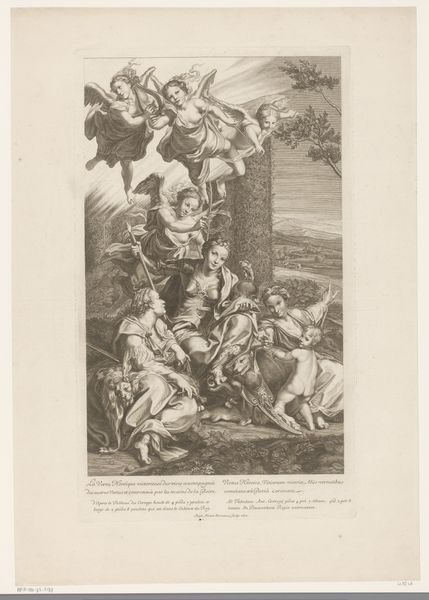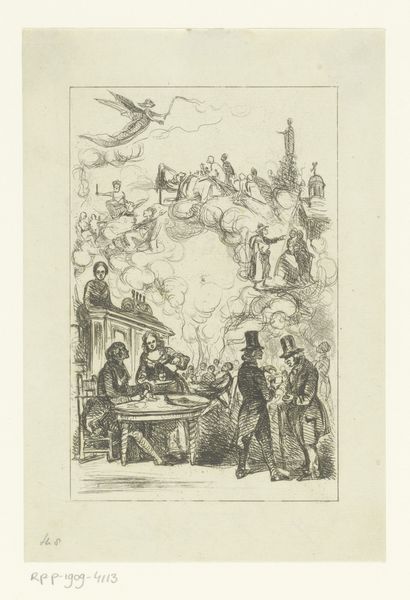
The Virgin Appearing to St. Simon Stock after 1743
0:00
0:00
drawing, print, etching, paper
#
drawing
#
allegory
#
baroque
# print
#
etching
#
figuration
#
paper
#
history-painting
Dimensions: 618 × 400 mm (plate); 753 × 539 mm (sheet)
Copyright: Public Domain
Curator: Giovanni Domenico Tiepolo’s etching, “The Virgin Appearing to St. Simon Stock," dates from after 1743 and illustrates a vision of the Virgin Mary. Editor: It’s quite dramatic! My first thought is one of contrast: the turbulence in the upper left set against the relative stillness on the right side. Curator: The scene is rooted in Carmelite tradition. St. Simon Stock, kneeling here, was the Prior General of the Carmelite Order. Tradition holds that the Virgin appeared to him, offering the scapular, a symbol of her protection. Editor: Yes, and it's interesting how Tiepolo uses symbols of power. The Virgin and her retinue appear in a dynamic, almost overwhelming manner. They practically burst forth. I am really drawn to this sense of immediate drama through religious icononography. Curator: The Church saw the strategic importance of imagery. It's no accident that the Carmelite Order widely circulated images like this to bolster its influence. Tiepolo, steeped in Venice's vibrant art scene, created pieces that are at once devout and visually stunning to cement those powers in popular culture. Editor: It is not hard to imagine the impact this imagery had on its audiences. This is such a busy picture, and yet, the eye goes right to the Virgin. How she hands the scapular to Simon becomes the powerful emotional and spiritual core. You also feel this is supposed to show divine power over the earthly plane where the skull serves as a stark memento mori. Curator: Absolutely. That contrast underscores the promise of salvation offered through devotion to Mary, which of course reinforces the cultural narratives favored by the Church. The dissemination of such images created visual theologies in broad and subtle ways. Editor: Thinking about it more deeply, it showcases how the artist used this visual narrative as an extremely charged display. Each symbolic layer connects back to broader social, religious, and even political structures, where such appearances reaffirm social order through spiritual power. I come away from this piece not just with visual admiration, but also thinking more carefully about how that image affected both social order and individual devotion. Curator: Indeed, a window into faith, skillfully crafted and consciously deployed, as was often the role of religious art in 18th-century European society.
Comments
No comments
Be the first to comment and join the conversation on the ultimate creative platform.
